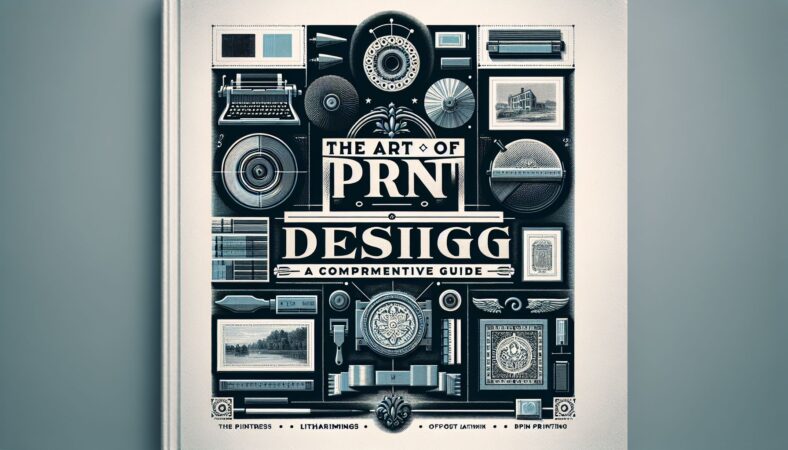In the world of graphic design, printing design plays a crucial role in bringing digital creations to life on physical mediums. Whether it’s business cards, flyers, posters, or packaging, understanding the principles of printing design is essential for creating eye-catching and professional-looking material. In this comprehensive guide, we will explore the key concepts and best practices of printing design to help you elevate your design skills and produce stunning printed materials.
Understanding Printing Processes
Before diving into the design aspect, it’s important to have a basic understanding of the different printing processes available. Each printing method has its own unique characteristics and requirements, which may influence your design choices. Here are some common printing techniques you should be familiar with:
Offset Printing
Offset printing is a traditional printing method that transfers ink from a plate to a rubber blanket, then onto the printing surface. It offers high-quality results, especially for large print runs, and supports a wide range of paper types and finishes.
Digital Printing
Digital printing is a modern and cost-effective printing method that directly transfers digital files onto paper. It is ideal for short print runs and allows for quick turnaround times and customization options.
Screen Printing
Screen printing involves pushing ink through a stencil onto the printing surface. It is commonly used for printing on T-shirts, posters, and other promotional items. Screen printing can achieve vibrant colors and is suitable for both small and large print runs.
Flexography
Flexography is a popular choice for packaging and labels. It uses flexible relief plates and fast-drying inks to print on a variety of materials, including paper, plastic, and metal.
Having a basic understanding of these printing processes will help you choose the right method for your project and optimize your design accordingly.
Designing for Print
When creating a design for print, there are several key considerations to keep in mind to ensure a successful outcome. Here are some tips to help you design with print in mind:
Resolution
Unlike digital designs, printed materials require high resolution for crisp and clear imagery. Make sure your images are at least 300 DPI (dots per inch) to avoid pixelation or blurriness when printed.
Color Mode
Print designs should be created in CMYK (Cyan, Magenta, Yellow, Black) color mode to accurately represent colors in the printing process. Avoid using RGB (Red, Green, Blue) color mode, as colors may appear differently when printed.
Bleed and Trim
Include bleed (extra space around the edges of the design) and trim marks to ensure your design extends all the way to the edge of the printed material. This prevents white borders or cut-off content.
Fonts
Choose fonts that are legible and suitable for print. Avoid using thin or overly decorative fonts, as they may be difficult to read when printed in smaller sizes. Make sure to embed or outline fonts to prevent font substitution issues.
Paper Selection
Consider the type of paper and finish that best suits your design. Different papers, such as glossy, matte, or textured, can impact the final look and feel of your printed material.
Test Prints
Always request a print proof or test print before finalizing your design. This allows you to check colors, alignment, and overall quality to make any necessary adjustments.
By following these guidelines and best practices, you can create print designs that look professional and visually appealing.
Tips for Effective Printing Design
Now that you have a solid foundation in printing processes and design considerations, let’s explore some tips for creating effective and engaging printed materials:
Visual Hierarchy
Establish a clear visual hierarchy in your design to guide the viewer’s eye through the content. Use size, color, and placement to emphasize important elements and create a flow that leads to the desired call-to-action.
White Space
Don’t be afraid of white space in your design. White space, or negative space, helps to create balance, improve readability, and draw attention to key elements. Embrace white space as a design tool rather than filling every inch of space with content.
Consistent Branding
Maintain consistency in your branding elements, such as logo, colors, and typography, across all printed materials. This creates a cohesive and recognizable brand identity that builds trust and loyalty with your audience.
Interactive Elements
Consider incorporating interactive elements into your print designs to create a memorable experience for the viewer. This could include QR codes, scratch-off sections, or fold-out panels that engage and surprise the audience.
Sustainability
Incorporate sustainable practices into your printing design by using eco-friendly materials, minimizing waste, and choosing printers with environmentally-friendly processes. Showcasing your commitment to sustainability can resonate with eco-conscious consumers and improve your brand image.
By implementing these tips and techniques, you can elevate your printing design skills and create impactful and memorable printed materials that resonate with your audience.
Conclusion
Printing design is a dynamic and versatile field that offers endless opportunities for creativity and innovation. By understanding printing processes, designing with print in mind, and following best practices, you can create stunning printed materials that captivate your audience and leave a lasting impression.
Whether you’re designing business cards, brochures, or packaging, remember to consider resolution, color mode, bleed and trim, fonts, paper selection, and test prints to ensure a successful outcome. Additionally, embrace visual hierarchy, white space, consistent branding, interactive elements, and sustainability practices to elevate your design and make a meaningful impact.
Incorporate these strategies into your printing design process, experiment with new techniques, and push the boundaries of creativity to create print designs that stand out and make a statement. By mastering the art of printing design, you can bring your digital creations to life in a tangible and impactful way.
